The animal kingdom harbors millions of varied species, many of which are charming and appealing. However, there are also creatures lurking in its darker corners that can incite a spine-tingling fear simply with their appearance.
Found deep in oceans, high in rainforest canopies or underground in soil, we are talking about the scariest looking animals you have ever seen. From the basking shark and the wolf eel to the whip scorpion and the Andean condor, today’s post will show you some of the most terrifying and creepy animals that exist.
Nevertheless, despite being some of the scariest animals to ever exist, most of the creatures featured in this post are completely harmless to humans. Here are 25 Creepiest Animals You Won’t Believe Actually Exist.

Basking Shark
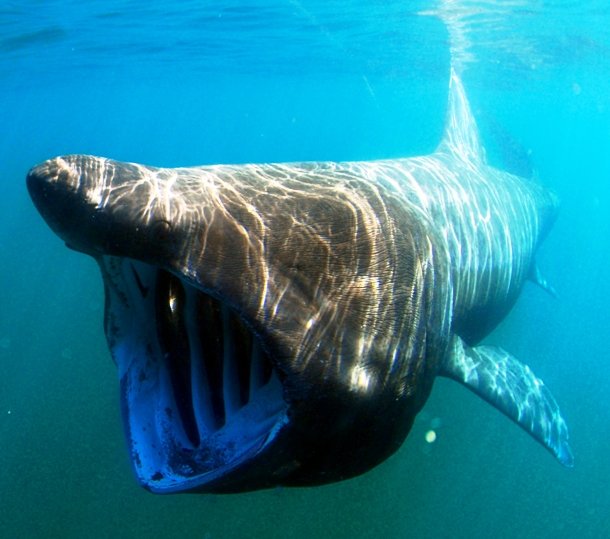 Source: sharks-world.com
Source: sharks-world.com There are many creepy animals in the ocean, and the Basking Shark is undoubtedly one of them. With a length of up to 8.8 m (29 ft), it is the second largest shark in the world, smaller only to the whale shark. However, despite its scary appearance and massive size, this marine creature feeds on plankton and is therefore harmless to people.
Shoebill
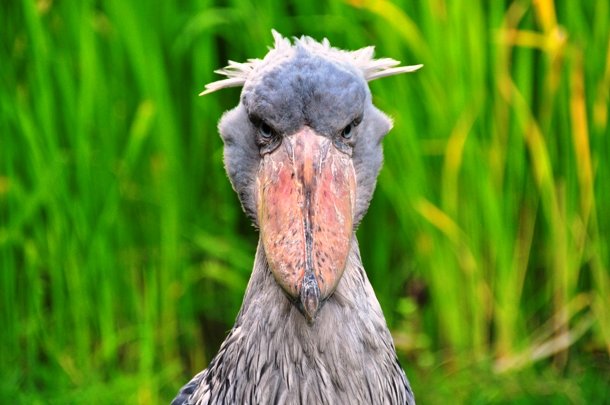 Source: dailymail.co.uk
Source: dailymail.co.uk A large stork-like bird, the Shoebill lives in large swamps in Eastern Africa and can grow to more than 1.5 m (5 ft) tall and can have a wingspan of up to 3 m (10 ft). Recognizable by its enormous bill and terrifying gaze, these predatory birds prey on fish, frogs, and reptiles such as baby crocodiles, insects, and even small mammals.
Naked Mole Rat
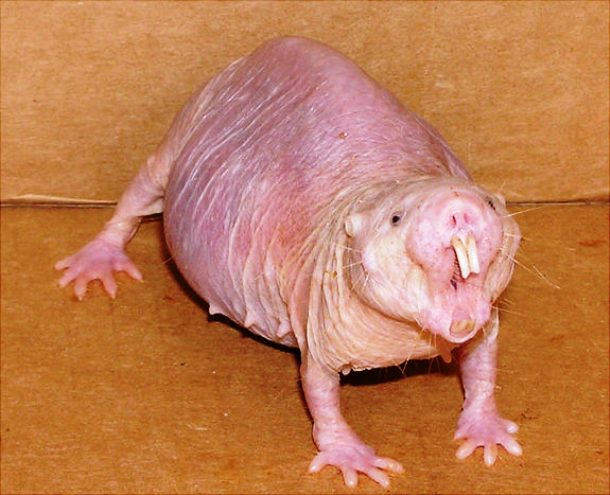 Source: nationalgeographic.com
Source: nationalgeographic.com Native to parts of Eastern Africa, the Naked Mole Rat is an extremely bizarre animal known for a number of oddities such as its longevity, resistance to cancer, living in ant-like colonies (with queen and workers), etc. This burrowing rodent is completely hairless, and its wrinkled body only underlines its creepy appearance.
Wolf Eel
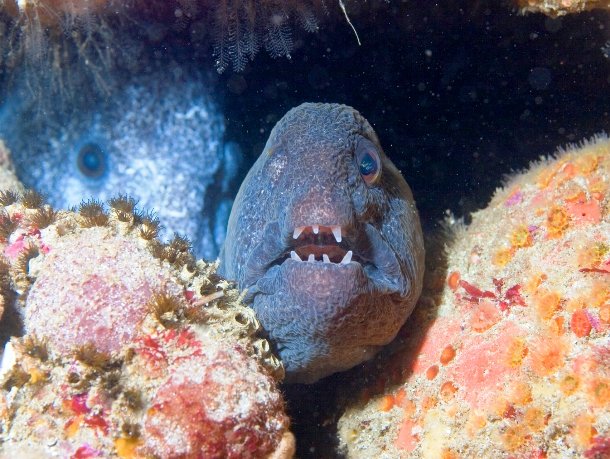 Source: aqua.org
Source: aqua.org A species of the wolf fish living in the North Pacific, the Wolf Eel is a large fish that inhabits rocky areas and is able to squeeze into small crevices due to its long, slender body. Reaching almost 2.5 m (8 ft) in length, the Wolf Eel has a terrifying appearance with strong jaws and sharp, spiky front teeth.
Star-Nosed Mole
 Source: nationalgeographic.com
Source: nationalgeographic.com A small mole found in wet low areas of Eastern Canada and the Northeastern United States, the Star-Nosed Mole is a very bizarre creature that looks like a cross between a rat and an octopus. Living under the ground, the mole is functionally blind; it uses its large snout to find prey and navigate through the soil.
Camel Spider
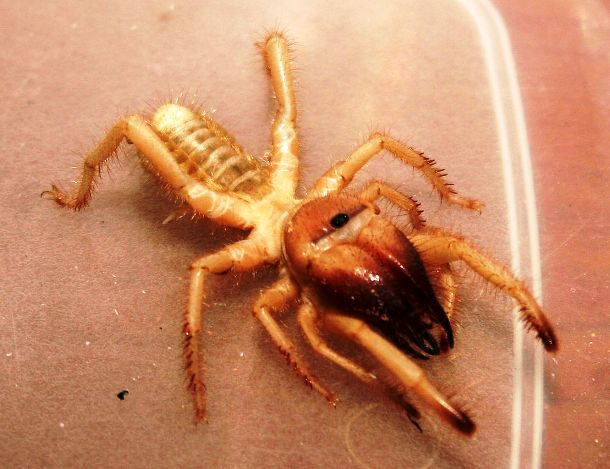 Source: livescience.com
Source: livescience.com The Camel Spider is a large arachnid (not a true spider though) recognizable by its unusual, ferocious-looking appearance. Native to Middle Eastern deserts, these creatures have been the stuff of many legends. They have been known to run after humans, kill camels, and jump up to 1 m (3 ft) high; luckily, none of these myths is actually true.
Northern Stargazer
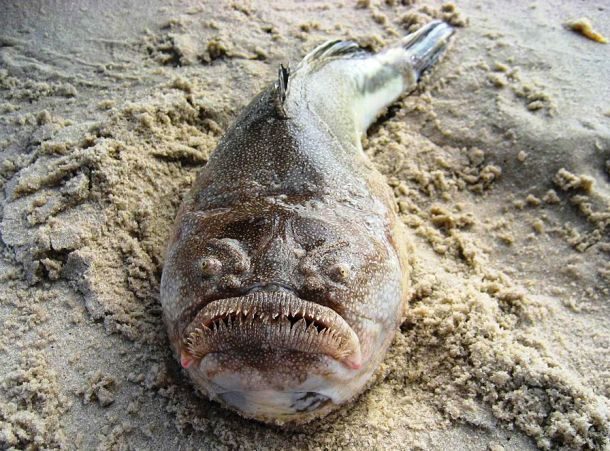 Source: flmnh.ufl.edu
Source: flmnh.ufl.edu Apart from its scary appearance, the Northern Stargazer is famous for another oddity. It has a special organ just behind its eyes that produces an electric shock which it uses defensively. This stout fish has completely adapted to spending most of its life buried in sand, waiting to ambush its prey and gulp it down whole.
Wrinkled-Faced Bat
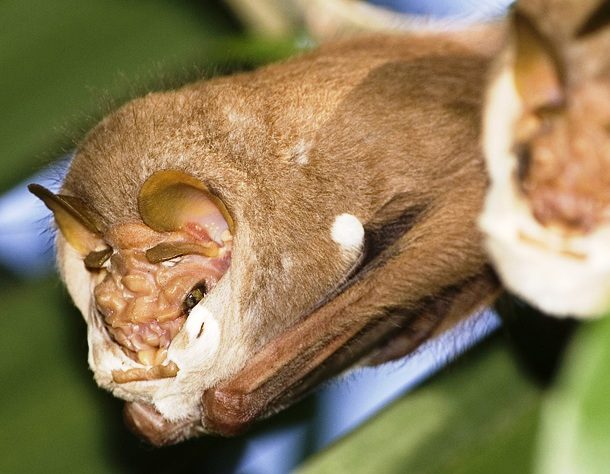 Source: animaldiversity.org
Source: animaldiversity.org
Aye-Aye
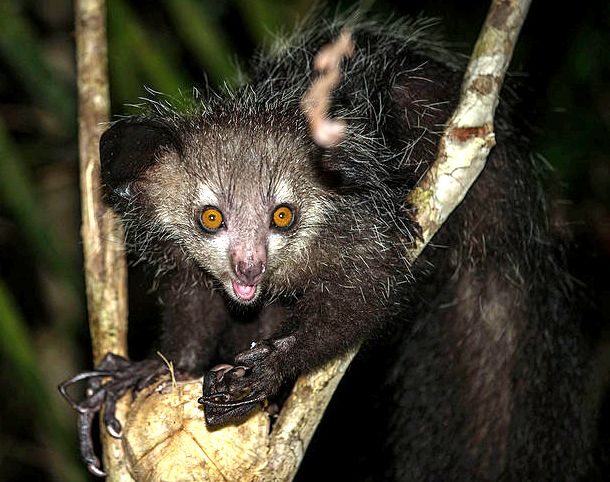 Source: nationalgeographic.com
Source: nationalgeographic.com Local to Madagascar, the Aye-Aye is a rare animal that may not look like a primate at first glance, but it is actually related to chimpanzees, apes, and humans. The Aye-Aye has pointed claws on all its fingers and toes except for its opposable big toes, which enables it to dangle from branches and find grubs in tree bark.
Chimaera
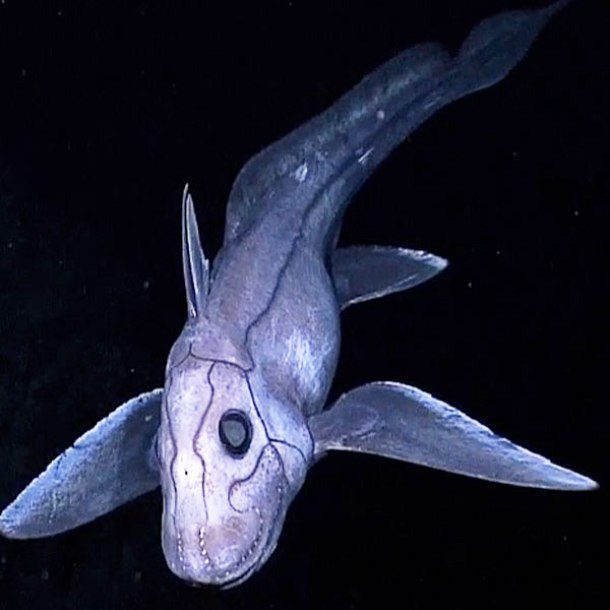 Source: nationalgeographic.com
Source: nationalgeographic.com Not to be confused with the Chimera of Greek mythology, the Chimaera (also known as the ghost shark) is a bizarre marine animal that once used to reside throughout the world’s oceans. Today, however, they mostly stick to deep waters. One specimen was recently captured by a remotely operated vehicle as far as 2,042 m (6,700 ft) below the ocean surface.
Whip Scorpion
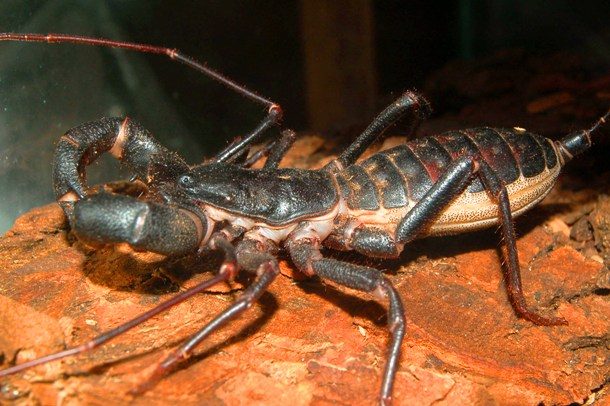 Source: orkin.com
Source: orkin.com Whip Scorpion are ferocious-looking arachnids that have a similar appearance to true scorpions but do not possess a venomous sting. Reaching up to 8.5 cm (3.35 in) in length, these carnivorous creatures can be found in tropical and subtropical areas worldwide. They typically prey on insects such as cockroaches and crickets.
California Condor
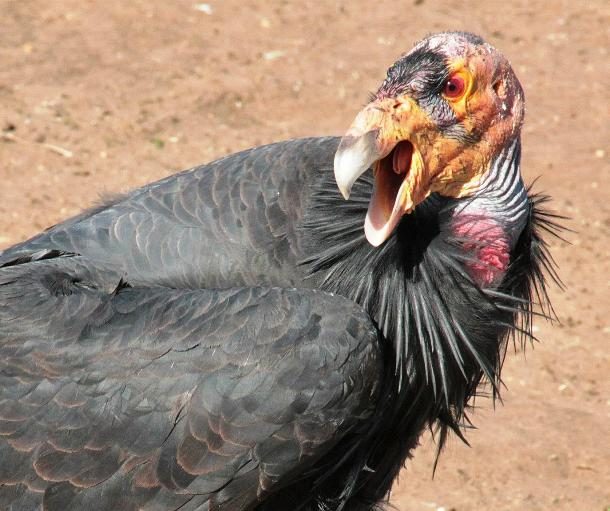 Source: allaboutbirds.org
Source: allaboutbirds.org The California Condor is the largest (and possibly also scariest) bird in North America. These excellent gliders travel widely to feed on carcasses of deer, pigs, cattle, sea lions, whales, and other animals. This magnificent bird is already extinct in the wild, but it has been recently reintroduced to some US states.
Purple Frog
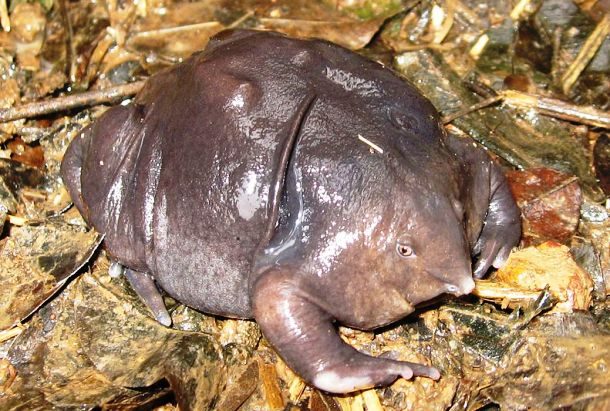 Source: nationalgeographic.com
Source: nationalgeographic.com Also known as the pig-nosed frog, the Purple Frog was discovered in 2003 when it was found in mountains of India’s the Western Ghats. With its chubby, purple body and pointed, pig-like snout, this frog is one of the creepiest amphibians on Earth. The animal spends most of the year underground, using its short limbs like spades to dig as far as 3.7 m (12 ft) below ground.
Giant Jellyfish
 Source: eol.org
Source: eol.org Also known as Tiburonia Granrojo, the Giant Jellyfish was discovered in 2003 and is the only member of its genus yet identified. Growing up to 3 m (10 ft) in diameter, it is one of the world‘s largest sea jellies. They have thick fleshy oral arms in place of the long tentacles found in most jellies. The coloration of this creature is also unusual – it is entirely deep red.
Arapaima
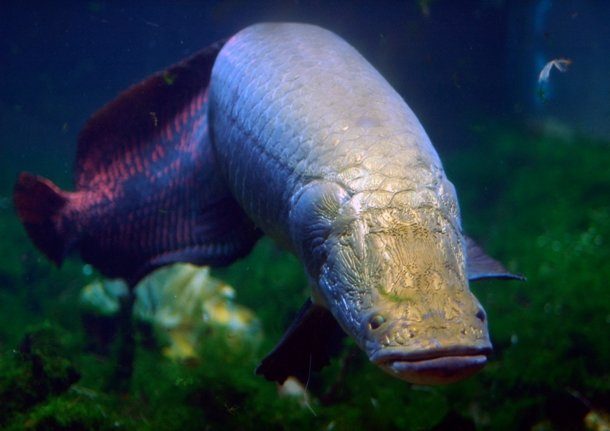 Source: nationalgeographic.com
Source: nationalgeographic.com Also known as the paiche or the pirarucu, the Arapaima is an air-breathing fish that lives in rainforest rivers of South America’s Amazon Basin and nearby lakes and swamps. One of the world’s largest freshwater fish, these giants can reach 2.75 m (9 ft) long and weigh up to 200 kg (440 lb). They have a wide, scaly, gray body and a small, narrow head.
Giant Weta
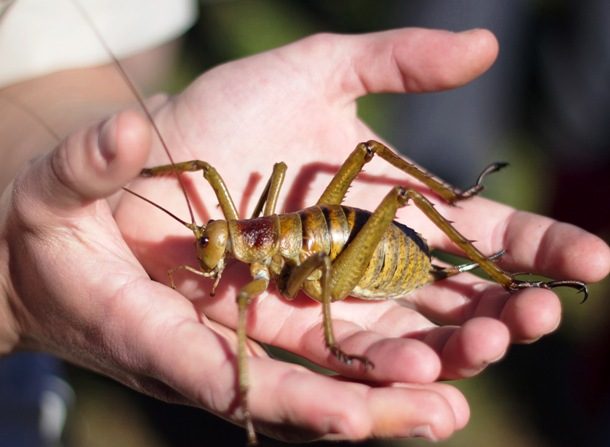 Source: doc.govt.nz
Source: doc.govt.nz Native to New Zealand, the Giant Weta is a very large insect species. Reaching weights of up to 35 g (1.23 oz), the bug usually hides in the dead leaves of tree ferns, or in nikau palms and cabbage trees, but it leaves its resting places at night to move around in trees or on the ground. Despite its enormous size, the Giant Weta only lives 6-9 months.
Andean Condor
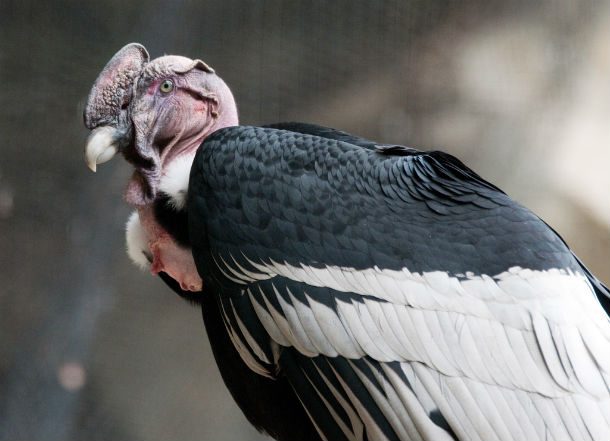 Source: nationalgeographic.com
Source: nationalgeographic.com Found in mountainous regions of South America, the Andean Condor is one of the largest birds in the world, reaching a weight of up to 15 kg (33 lb) and a wingspan of up to 3 m (10 ft). Its enormous size combined with its scary appearance and the powerful beak also makes it one of the most terrifying birds.
Sloth
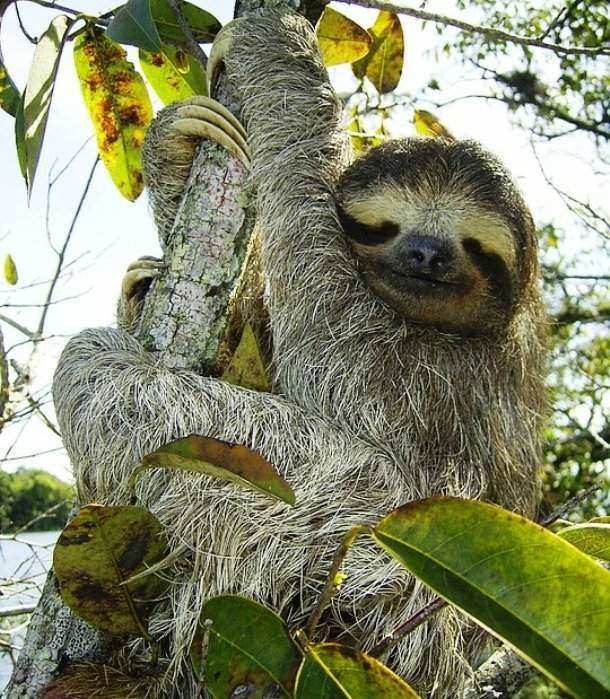 Source: worldwildlife.org
Source: worldwildlife.org Native to tropical rainforests in Central and South America, the Sloth has a reputation of being one of the most bizarre and creepiest animals in the world. Famous for their laziness, these creatures spend up to 20 hours a day sleeping. Surprisingly, they are excellent swimmers and are also notable for their unique ability to host algae on their furs that helps both the algae and sloth.
Bird Dung Crab Spider
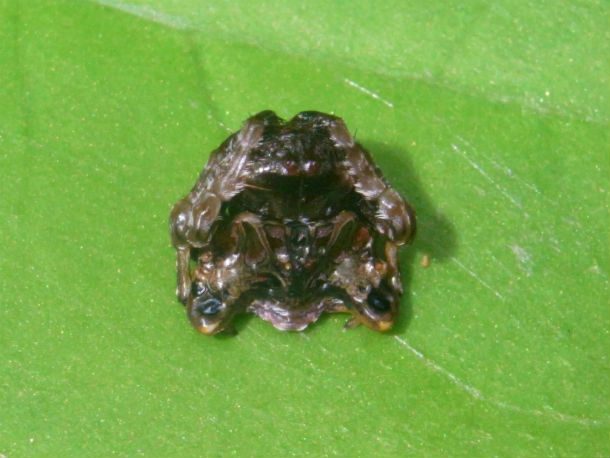 Source: newscientist.com
Source: newscientist.com Found in jungles of Southeastern Asia, the Bird Dung Crab Spider has a unique ability to mimic a bird dropping in color, shape, size and even smell. Masters of deception, these small spiders spend a lot of time sitting motionlessly on the leaves of plants, waiting to attract unsuspecting insects such as flies for dinner.
Fangtooth Moray
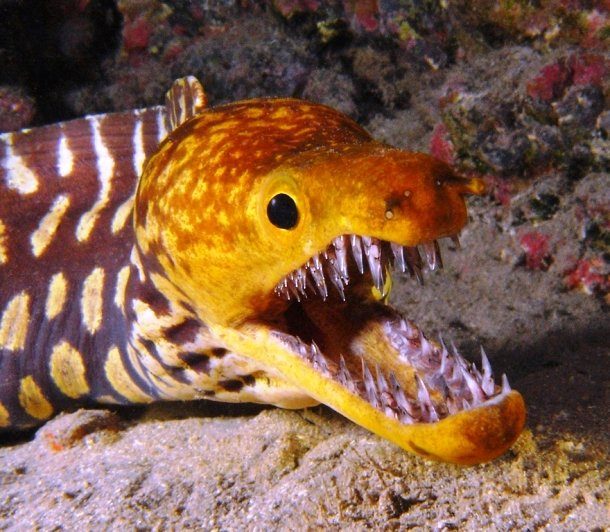 Source: dailymail.co.uk
Source: dailymail.co.uk Found in warmer parts of the eastern Atlantic Ocean and the Mediterranean Sea including the Canary Islands, Madeira and other islands, the Fangtooth Moray is a threatening-looking fish that lives in small caves, holes, and cracks, which they can share with other eels. With strong, razor-sharp teeth, these morays reach up to 120 cm (4 ft) in length.
Giant Isopod
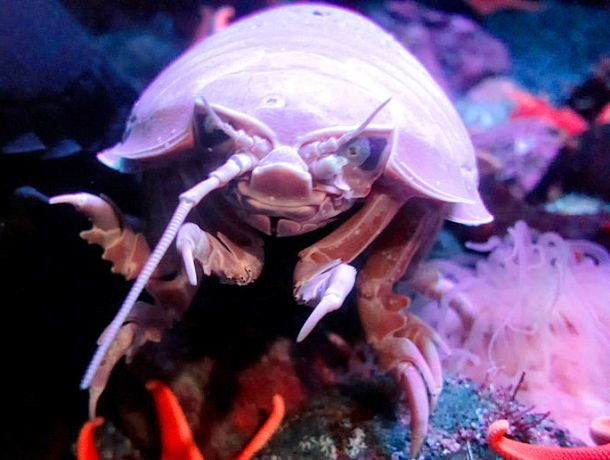 Source: aquariumofpacific.org
Source: aquariumofpacific.org Abundant in cold, deep waters of the Atlantic, Pacific, and Indian Oceans, the Giant Isopod is one of the largest crustaceans and the largest known member of the isopod family, a group of crustaceans that are closely related to shrimps and crabs. The largest species can reach up to 1.7 kg (3.7 lb) in weight and up to 76 cm (30 in) in length.
Pacu Fish
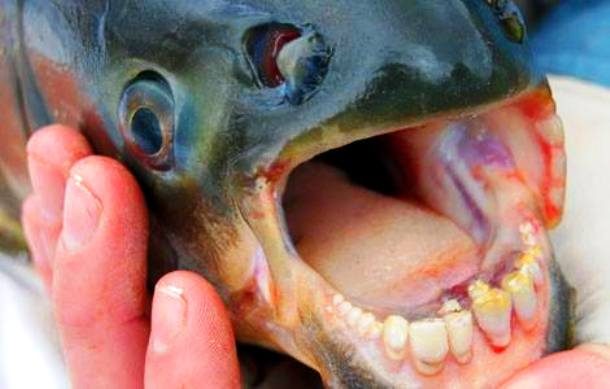 Source: mnn.com
Source: mnn.com The Pacu Fish is an omnivorous fish native to the Amazon River basin in South America and is notable for its strange mouth of human-like teeth. The fish are popular in pet stores when they are young, but they can easily outgrow most home fish tanks. The Pacu Fish is closely related to the piranha, but the Pacu is much larger and, unlike the piranha, it mainly feeds on water plants.
Humpback Anglerfish
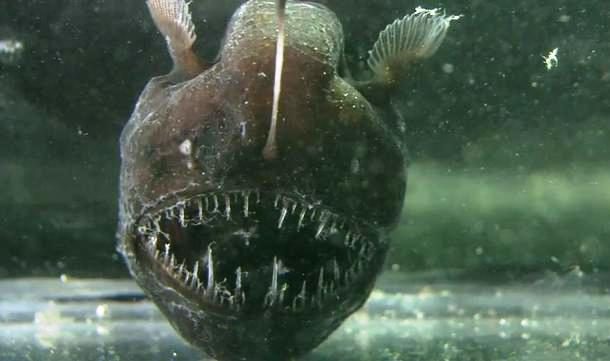 Source: oceana.org
Source: oceana.org One of the scariest animals in the world, the Humpback Anglerfish is a deep sea creature that inhabits all oceans of the world. Found at depths of at least 2 km (6600 ft), the fish lives its life in the complete absence of sunlight. Like all anglerfishes, this species also have a lure to attract prey. Despite its terrifying appearance, the fish is just a few centimeters long.
Giant Water Bug
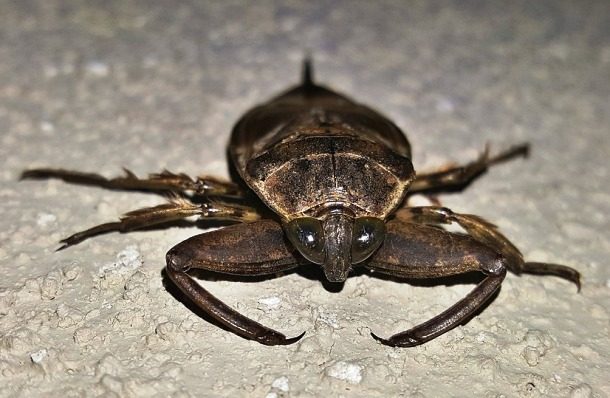 Source: bbc.co.uk
Source: bbc.co.uk Known by several other names such as the toe-biter and the alligator flea, the Giant Water Bug is a large insect that can be found in freshwater ponds, lakes, streams, and rivers in the Americas, Northern Australia, and East Asia. These fierce predators have been known to prey upon small vertebrates such as fish and frogs, but they can also kill small snakes and even turtles.
Marabou Stork
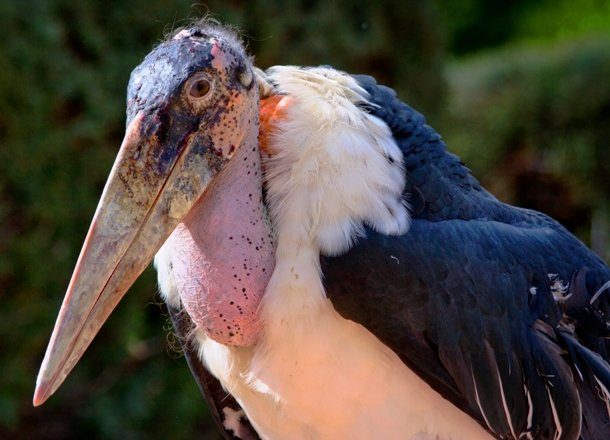 Source: eol.org
Source: eol.org Also known as the undertaker bird, the Marabou Stork is a very large wading bird with an unusual appearance. Commonly found in tropical areas of Africa, this bird can weigh up to 6 kg (14 lb) and have a wingspan as large as 4 m (12 ft) – one of the largest among all birds. It also has a big red air sac on its neck that it can inflate and deflate to make various noises.
Lists Going Viral Right Now
Photos: Feature Image: Justin via flickr, CC BY 2.0, 25. simple.wikipedia.org (public domain), 24. Olaf Oliviero Riemer, Balaeniceps rex (Schuhschnabel – Shoebill) – Weltvogelpark Walsrode 2010-10, CC BY-SA 3.0, 23. Uploaded by Jedimentat44 on flickr., Naked mole rat, CC BY 2.0, 22. commons.wikimedia.org (public domain), 21. commons.wikimedia.org (public domain), 20. commons.wikimedia.org (public domain), 19. Canvasman21 at the English language Wikipedia, Northern Stargazer, CC BY-SA 3.0, 18. Jplevraud, Centurio senex, CC BY-SA 3.0, 17. nomis-simon, Wild aye aye, CC BY 2.0, 16. commons.wikimedia.org (public domain), 15. commons.wikimedia.org (public domain), 14. Pacific Southwest Region from Sacramento, US, California condor at Bitter Creek NWR (6391185515), CC BY 2.0, 13. Karthickbala at ta.wikipedia, Nasikabatrachus sahyadrensis, CC BY-SA 3.0, 12. commons.wikimedia.org (public domain), 11. Jeff Kubina from Columbia, Maryland, Arapaima gigas at National Zoo, CC BY-SA 2.0, 10. Dinobass, Wetapunga, CC BY-SA 4.0, 9. Erik Kilby via flickr, CC BY-SA 2.0, 8. https://pixabay.com/cs/photos/sloth/ (public domain), 7. Poyt448 Peter Woodard, Bird dropping spider Chatswood West, CC BY-SA 3.0, 6. Philippe Guillaume, Fangtooth moray, CC BY 2.0, 5. Eric Kilby from Somerville, MA, USA, Giant Isopod (18443864634), CC BY-SA 2.0, 4. Nisamanee wanmoon, ปลาเปคู (Pacu), CC BY-SA 4.0, 3. Javontaevious at English Wikipedia, Humpback Anglerfish (Melanocetus Johnsonii), CC BY-SA 3.0, 2. pixabay.com (public domain), 1. Carlos Delgado, Leptoptilos crumeniferus – 01, CC BY-SA 3.0



























